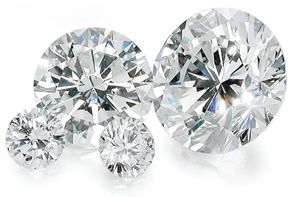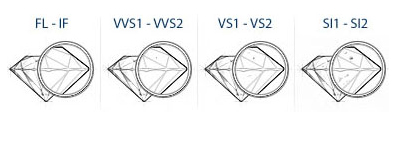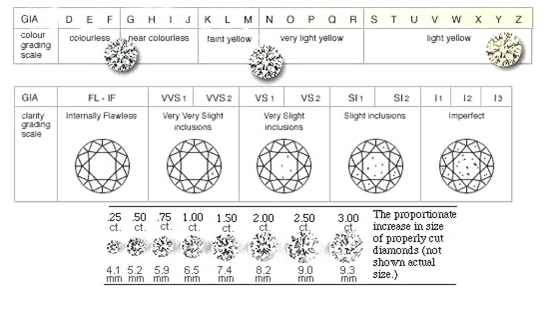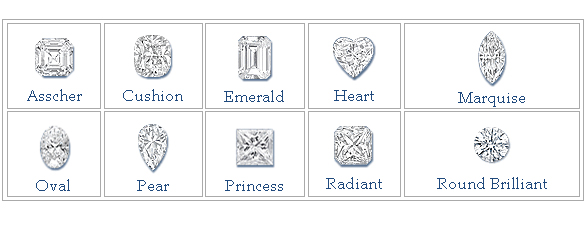800-515-1561
Diamond Guide
|
Clarity
Internally flawless (and flawless) group: FL-IF The highest clarity grade given. The diamond in question will be without imperfections visible with x10 magnification. Some blemishes may be permitted externally bringing the stone to clarity of flawless; or Internally Flawless. Very slightly included group: VVS1 and VVS2 The VVS group is divided into two, VVS1 and VVS2: The VVS inclusion in question will be very hard to detect, even for an experienced examiner using x10 power magnification. Very slight included group: VS1 and VS2 The definition of this group is as follows: The VS inclusion in question will be hard to detect, even for an experienced examiner using x10 power magnification. Slightly included group: SI1, SI2 and SI3 The majority of engagement diamonds bought today is of the SI range: Inclusions and imperfections in this group may be visible easily with the aid of x10 magnification. SI3, a relatively new grade added by some laboratories to bridge the very wide gap between SI2 and I1 (imperfect). * SI1: Can be seen easily with x10 magnification. Cannot be viewed with the naked eye. * SI2: Can be seen easily with x10 magnification. Rarely can be viewed with the naked eye. * SI3: Can be seen very easily with x10 magnification. In most cases (stones above 3/4 of a carat) can be viewed with the naked eye. Color Color is another important factor in choosing the right diamond for your ring. Since color itself acts as a filter (think of the way rose colored glasses take away certain harsh or vibrant colors when looked into), the color quality is very important to diamonds because the more color your diamond has, the less fire or sparkle will be exuded from its crown. In other words, your diamond takes in light similar to a prism and reflects its colors, called fire. Fire gives a diamond its beautiful sparkle, and to ensure that you have the right diamond for you consider the following standards for color quality. D-E-F: Colorless. This is the colorless diamond group. They are common enough to be found in any store, but still command the highest prices. D and E show virtually no color. F starts to show the very slightest of color and is the transitional color to the next group. G-H-I: Near colorless. This is the near colorless group. If you are looking for value when you shop, ask to see stones from this group. These diamonds begin to exhibit a very light shade of color, but it is hard to detect in mounted stones. J-K-L-M: Faint yellow. This is the group that begins to show slight yellow color which may be noticeable from the top of the stone and even more from the sides. To ensure highest quality in all our products, Wedding Bands Wholesale does not work with diamonds beyond I color and all of our diamonds are graded for color prior to mounting.
Diamond Shapes The most common diamond shapes are round brilliant and princess cut diamonds. However, there are quite a few diamond shapes to choose from, such as Marquise, Oval, Emerald, Cushion, Asscher, Emerald, Pear, Radiant and Trilliant. Below are pictures of each diamond shape:
Now that you know some basic information about diamond quality, in terms of its clarity and color, you should be ready choose your perfect diamond. This basic information will get you through the first steps of buying a dimaond, and will help dispell any fears or misconceptions you may have while distinguishing between different quality and value in diamonds. Wedding Bands Wholesale recommends visiting our diamond education page for more on the basic four C’s of diamond quailty. We offer an indepth and easy to follow guide to anything and everything you should know about diamonds! We’re also just a phone call or email away, and our excellent customer service representatives are availible to assist you with any questions or concerns you may have along the way. |





